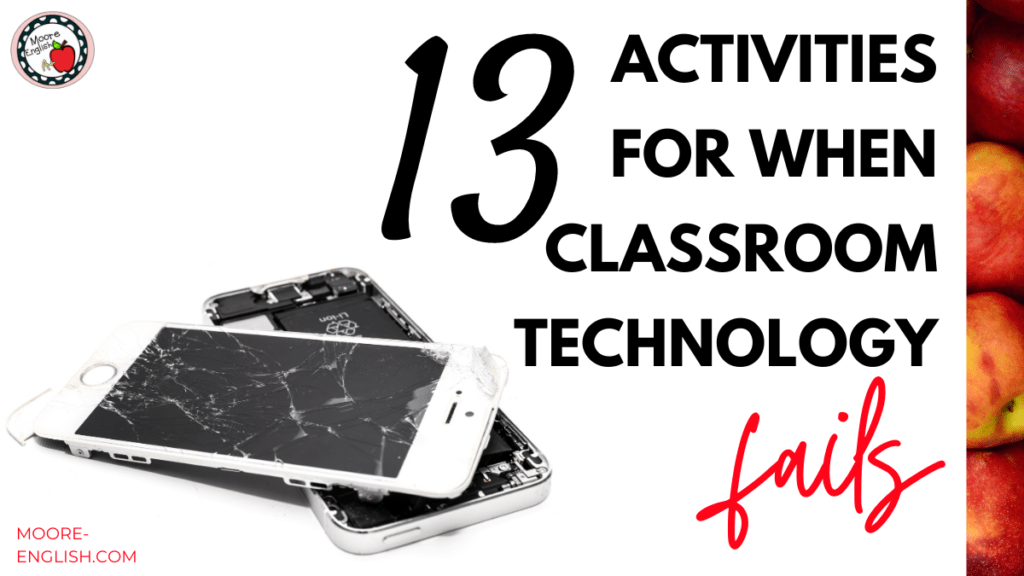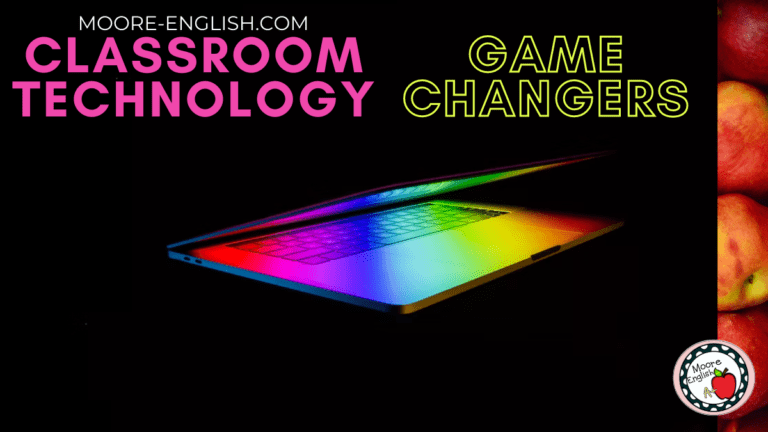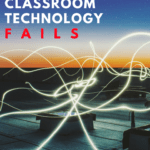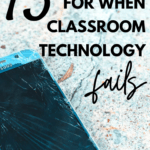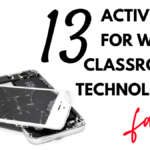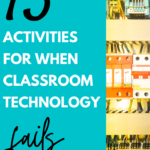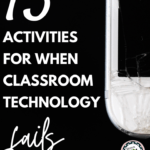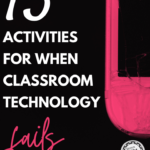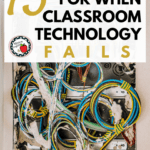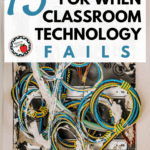On Tuesday, my sophomores were supposed to take a test. Per district expectations, we were opening our Chromebooks when the wifi went down. After waiting for a few minutes, an announcement came over the intercom to say that this was not a drill, and no one knew when the problem would be fixed.
In other words, it was time to pivot.
On Friday, my sophomores were using the library databases to research. Unfortunately, the wifi failed again.
Because there is always a looming threat of distance learning, I have kept nearly all my classroom activities on the computer. This means less trading back and forth of potentially germy papers. Additionally, this provides a routine and structure that will transfer if we bounce back and forth between in-seat and distance learning.
As this past week has reminded me, technology fails sometimes. As teachers, we cannot stop teaching for a pandemic, so we’re certainly not going to stop teaching just because we can’t access Google Classroom.
With all of this in mind, I wanted to share some instructional options for when the technology fails.
This post this post may contain affiliate links. Please read the Terms of Use.
Traditional Technology Alternatives
While these options may seem a little basic, for many teachers, these are the most practical options. When technology fails, sometimes the simplest solution is more workable.
Worksheets: Like a good Girl Scout, I try to always be prepared. Knowing that the wifi could disappear and that I would have to adjust my lesson plans with little notice, I keep a stack of ready-to-use worksheets handy. At the beginning of the year, I choose one worksheet (this year it’s this one) that I can use with any of my classes. Then, I make enough copies to cover all of my classes. If the wifi fails, I have this worksheet ready to go. This is also the same stack of worksheets I leave for emergency sub plans.
Textbooks: Many classrooms also have textbooks or dictionaries. With little prep, teachers can choose a passage from a textbook to use in a snap. A textbook reading can be used to practice close reading. Or students can analyze text features or focus on vocabulary. Perhaps my favorite way to use a textbook is to have a scavenger hunt.
Literary Technology Alternatives
Sometimes a tech failure can be a blessing in disguise. This is especially true if you can turn a frustrating situation into an opportunity to promote literacy!
Silent Reading: Lots of teachers incorporate sustained silent reading. Silent reading provides students with opportunities to explore, learn, and grow with little pressure from outside sources. When technology fails, the classroom or building library can be a great sanctuary!
Book Tastings: When the wifi is down, a book tasting can be a great way to promote literacy, engage students, and celebrate reading. The librarians in my school do a great job with book tastings! Here’s a quick run-down:
- Firstly, choose a few more books than students in the classroom and scatter them around the classroom or library.
- Secondly, organize the books by genre.
- Thirdly, spotlight a few books in each genre with short “blurbs” designed to engage students.
- Then, give students some time to browse the book recommendations. Teachers can put students in rotations, timing each rotation to make sure students are sampling a variety or books. Similarly, teachers can give students sticky notes to keep track of which books they want to read.
- Once everyone has a book or two, settle down for some sustained reading!
- As a follow-up to a Book Tasting, students can also complete a First Impressions Book Review!
First Chapter Fridays have become so popular in recent years! I even have an entire Pinterest board dedicated to this craze! Even if your school technology fails early in the week, a First Chapter Friday-style event can be a good way to make the most of class time while also promoting student reading.
Get Moving when Technology Fails
Incorporating movement into instruction is a great way to keep students engaged and to ensure students are learning as much as possible. When technology fails, it might just be a sign to look beyond the computer screen!
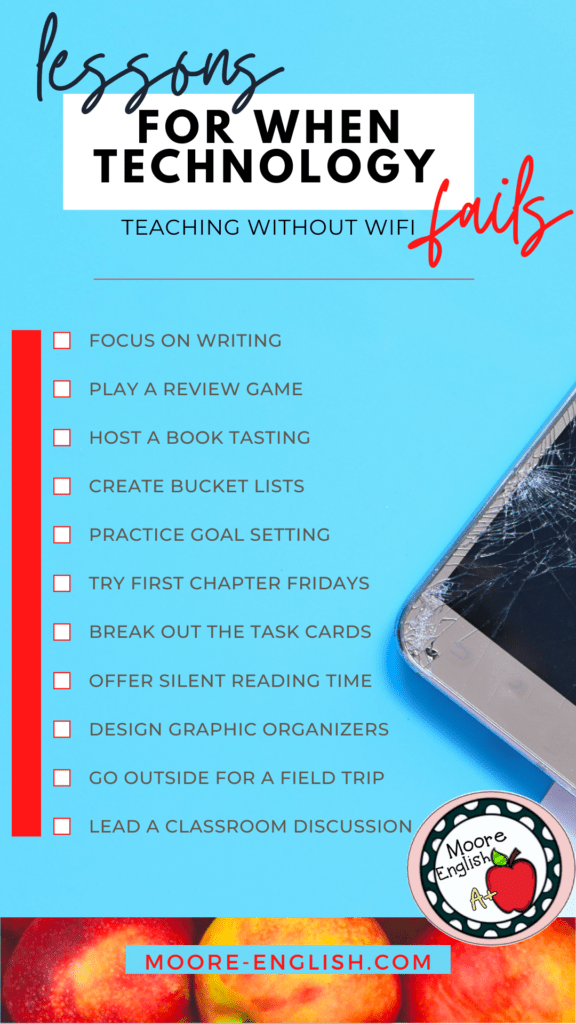
Field Trip: Moving around the school can be a good way to use tech-down time. Take students outside for a read-aloud, or move independent reading time to the courtyard. Additionally, tech down time might provide students with an opportunity to visit the library, chat with their counselors, and meet-and-greet other building staff.
Task Cards: When our technology failed this week, I ended up taking students to the library. However, if the library had been busy, we were going to work with task cards. Because of the pandemic, we haven’t used paper task cards much this year (we have mostly used Google Jamboard for digital task cards instead). Because I was missing the interactive nature of printed task cards, I laminated several sets so I could sanitize them between classes. Here are some of my favorite task card sets:
- The Parallelism Game
- Grammar and Vocabulary Task Cards
- ELA Story Elements and Poetry Task Cards
- You can even use this free template to create your own task cards!
Review Games: Playing review games is another good way to get students up and moving! If you have a short amount of time, board races are quick. On the other hand, if you have more time, a trasketball tournament is popular. With March Madness just around the corner, you could also try a bracket-style challenge! I like to keep a stack of Literary Devices BINGO cards on hand. My students love BINGO, and if I have to be absent in an emergency, this is a good game for subs.
Get Creative When Technology Fails
While technology can be a creative outlet in its own right, the absence of technology can invite students to try other creative opportunities.
Graphic Organizers: Completing graphic organizers requires almost no notice. Students can create Venn Diagrams, T-Charts, Word Profiles, and Mind Maps on notebook paper, so teachers do not even need to visit the copy machine. Think about whatever the class is currently reading, and invite students to complete character profiles, to compare and contrast characters, and/or to create plot diagrams.
Bucket Lists: Incorporating bucket lists is a fun way to invite metacognitive thinking into the classroom. Again, students do not need fancy paper or printables to create a bucket list of their high school goals. Similarly, students can also create bucket lists for the characters in their independent reading or in class literature. Check out my favorite bucket list activities!
Writing: Working on writing skills is another great option for when technology fails. Students can work on structured paragraphs, journaling, or creative writing. Teachers can give students interactive writing activities where they pass a story from person to person. A fun and meaningful writing activity might be to have students write thank-you cards to support staff, secretaries, past teachers, or custodial staff. Students can even get crafty if time allows! Check out three ways to incorporate letter-writing in your classroom!
Talking Technology Alternatives
Technology is often derided as the end of great conversation, so use a technology failure to help students build their speaking and listening skills.
Goal setting conferences: Use a technology blackout as an opportunity to focus on goal setting. Students can fill out or revisit this free goal sheet. If you have time, you can engage students in individual conferences about their goals for your course or the school year.
Classroom Discussion or Debate: Depending on what you are reading in class, you can engage students in a Socratic Seminar or Classroom Debate. Students can talk about what you are currently reading or learning. If that’s not an option, the tech-free situation can be its own inspiration. In other words, students could discuss whether or not humans are too technology dependent or whether or not they think technology improves learning.

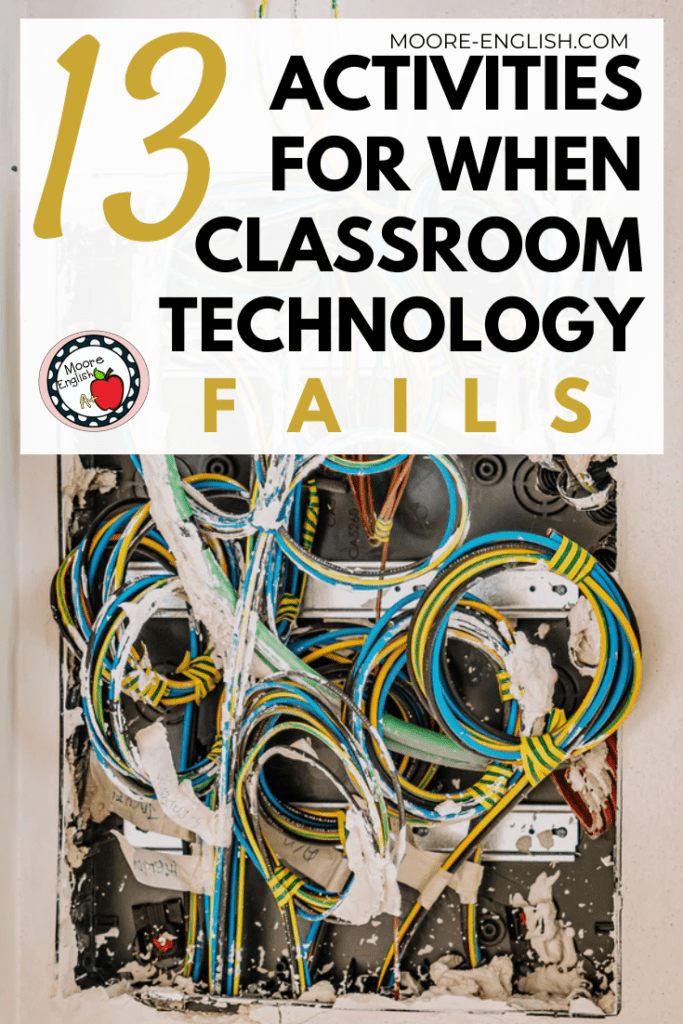
Photo credits: Ashkan Forouzani, Florian Weichelt, Ashkan Forouzani, Ralph (Ravi) Kayden, Federico Beccari, and Markus Spiske on Unsplash

